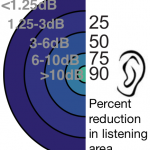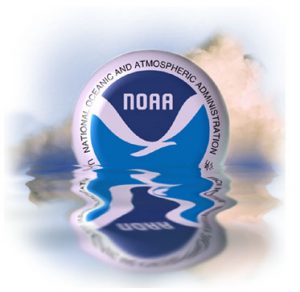Turning science into policy is a long, slow road. The 2004 launch of the Acoustic Ecology Institute more or less coincided with the emergence of shipping noise as an environmental concern; symposia held by the National Marine Fisheries Service (now NOAA Fisheries) in 2004 and the Marine Mammal Commission in 2005 marked the start of growing scientific awareness that moderate chronic noise may be a bigger issue for marine life than the loud, transient sounds of sonar and airguns. AEI has focused on this key question from the start in special reports and our ongoing news/science coverage.

In 2014, the International Maritime Organization (IMO) completed an at times sluggish six-year process and adopted voluntary noise reduction guidelines for large ships. Since then, the pace seems to be picking up as the shipping industry, port authorities, and eco-certification programs have all begun embracing the need to slow or reverse the long-term trends of increasing shipping noise in most of the world’s oceans.
This month, the port industry trade magazine Port Strategy included a long feature article that brings the story up to date. Among the new and encouraging developments is the work of Green Marine, a sustainability-certification outfit that works with 28 shipping companies and 38 ports in the US and Canada, including biggies like Seattle and New Orleans. After partnering with Transport Canada last year on a review of the current state of science in Understanding Anthropogenic Noise, Green Marine has now announced shipping-noise criteria that will be rolled out this year as a voluntary add-on for shipping companies that are part of their certification program, then will become a mandatory element of the Green Marine certification in 2018. The 5-stage criterion is modest to start, with increasing degrees of commitment (it’s unclear whether companies are expected to continually deepen their commitments, or not). The exciting news is that shipping companies are voluntarily committing to go beyond what’s required by current regulations; Green Marine Executive Director David Bolduc says:
“It is important to underline that the maritime companies and ports that are certified by Green Marine have voluntarily accepted to adopt the new underwater noise evaluation criteria with no regulations obliging them to do so. These participants made the commitment to address the issue more easily. For others, it was a relatively new issue; they needed to learn about noise, its sources, its potential impacts, and the mitigation measures.
“The indicator is a great tool to help them understand underwater noise and, most importantly, address this emerging issue. [It] is the result of collaboration among the industry, environmental organisations, the scientific community, and government representatives. Two intensive years of research and discussions were necessary to develop the five-level criteria.”
Meanwhile, following up on an AEI note from January, the Port of Vancouver’s inclusion of quiet ship guidelines as part of its reduced-fee Eco-Action initiative has generated its first takers: “We’ve heard anecdotally from some vessel sectors that they plan to upgrade their fleets to meet the new incentive standards,” says the port. “In the first quarter of 2017, two vessels have applied and been awarded a bronze level discount.”
And in the US, NOAA released an Ocean Noise Strategy Roadmap in late 2016 that will become the framework for ongoing research and management of ocean noise, including an emphasis on managing acoustic habitat. All this points to the next decade becoming a real turning point, as the past fifteen years of increasing awareness is channeled into constructive action to begin reducing our noise footprint in the seas.


 The recent
The recent 